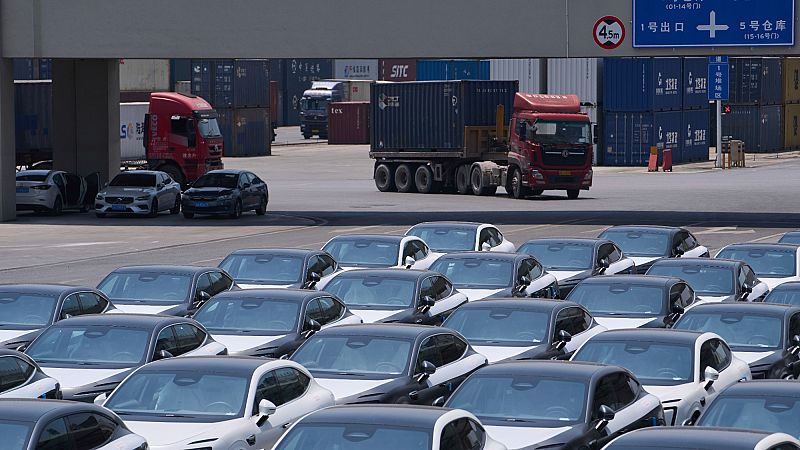
In May, China's exports increased by 4.8% compared to the previous year, as reported on Monday in data released shortly before another round of trade discussions between the U.S. and China took place.
The overall amount was slightly less than anticipated, with exports to the United States dropping by 34.5% during this timeframe.
The imports decreased by 3.4% compared to the previous year, resulting in a trade surplus of $103.2 billion (€90.33 billion).
In May, China exported $28.8 billion worth of goods to the United States, down from $44 billion during the same period last year, according to the report. Additionally, its imports from the U.S. dropped by 7.4%, totaling $10.8 billion.
Nevertheless, shipments to Southeast Asia and the European Union stayed strong, with increases of 14.8% and 12% respectively compared to the previous year.
Lynne Song from ING Economics noted in her analysis, "The boost in exports to various economies has assisted China's exports in staying fairly robust despite the trade conflict."
Nevertheless, trade decelerated in May following an 8.1% increase in China's global exports in April.
A number of companies hastened their orders to avoid facing increased tariffs, despite several new import taxes coming into play or staying enforced.
Exports may recover slightly in June due to a 90-day pause on most tariffs between China and the U.S., which were part of an intensifying trade conflict.
"But given that tariffs are expected to stay high and Chinese manufacturers encounter increasing limitations in maintaining quick increases in their global market share, we believe export growth will decelerate further by year-end," Zichun Huang from Capital Economics stated in a report.
Even after the agreement to pause new trade tariffs, tensions between Beijing and Washington continue, marked by heated debates about cutting-edge semiconductor technology, essential "rare earth" materials crucial for various sectors, and visa restrictions for Chinese students studying at U.S. colleges.
The subsequent negotiation phase is scheduled for Monday in London, after a telephone conversation between Trump and China’s leader, Xi Jinping, took place last week.
Figures disclosed on Monday underscored how diminishing exports are affecting the globe’s second-largest economy, as China relies heavily on importing numerous components and raw materials necessary for assembling products destined for international markets.
Meanwhile, China’s internal markets are also facing challenges. According to governmental data, consumer prices dropped by 0.1% in May, indicating weak demand. Economists noted that this ongoing deflation is largely due to decreased food costs.
The decline in producer prices worsened, shrinking by 3.3% in May, marking its smallest value in nearly two years, following a decrease of 2.7% in April.
